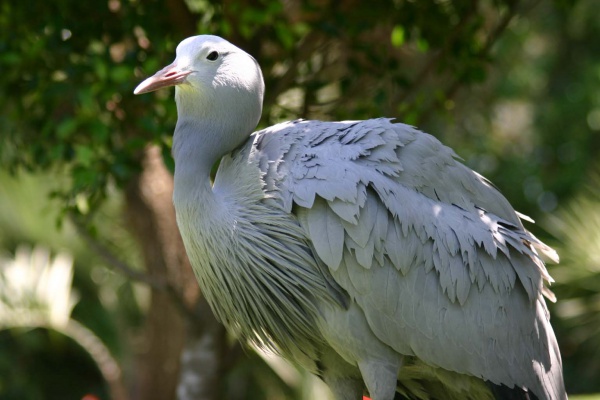Facts About Blue crane
The blue crane, also known as the Stanley crane or paradise crane, is South Africa's national bird and is currently listed as Vulnerable by the IUCN. These elegant birds are ground-dwellers and are easily recognizable. They stand about 100 to 120 cm tall and weigh between 3.6 and 6.2 kg. Their plumage is a striking pale blue-gray, with darker hues on their upper head and neck. Their bills are typically ochre to grayish with a slight pink tinge.
Blue cranes prefer dry, grassy uplands, often nesting in lower grasslands at elevations ranging from 1,300 to 2,000 meters. During the winter, they migrate to lower altitudes in search of milder conditions.
These cranes are somewhat social but can be quite aggressive, especially during the nesting season. They do not hesitate to confront other animals, including humans if they feel threatened. Their diet mainly consists of grasses and sedges, but they also eat insects, small animals, and protein-rich foods, especially for their chicks.
Breeding for blue cranes is a seasonal affair. Pairs engage in elaborate courtship dances before mating, which is quite a sight to behold. Typically, the female lays two eggs, and both parents share the responsibility of incubating them. Once hatched, the young are cared for by both parents until the next breeding season.
Unfortunately, the blue crane population has been declining due to several factors such as human population growth, habitat loss from commercial tree plantations, and poisoning. Conservation efforts are in place, including legal protection, research, habitat management, education, and collaboration with private landowners.
The blue crane holds significant cultural value for the Xhosa and Zulu people in South Africa. Traditional ceremonies often feature blue crane feathers. Additionally, the Isitwalandwe Medal, a symbol of heroism and resistance to apartheid, features the blue crane, highlighting its importance in South African culture.

 Namibia
Namibia